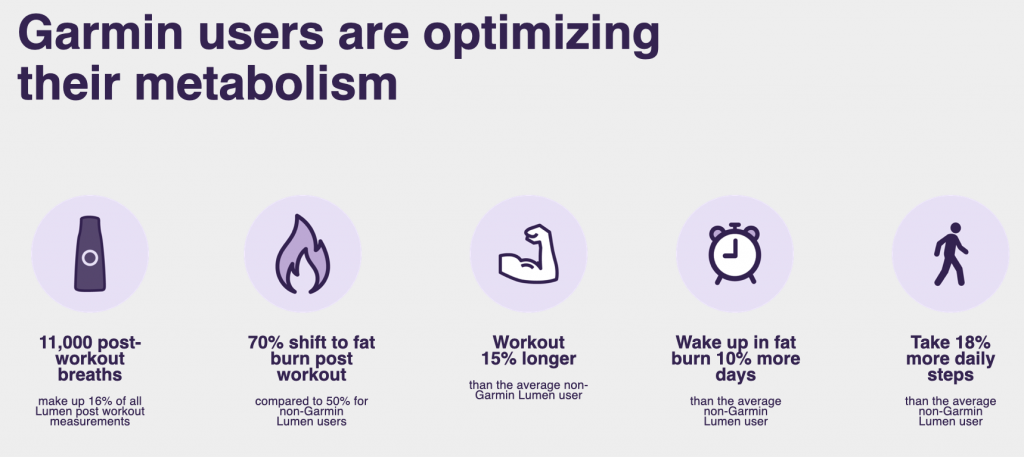Launching an API integration with Garmin is the stepping stone to further understand the impact of our workouts on our metabolism in real-time. Garmin watch owners are the perfect example of active people on the go who want to monitor their health and make adjustments to their workouts from the comfort of their wrist. After careful analysis, we noticed some interesting lifestyle habits and data that make Garmin users unique compared to Lumen users that do not rely on wearables. Here are 5 ways Garmin users are hacking their metabolism more optimally.

Wearables have gained a new level of popularity as 1 in 5 American adults say they wear a tracker regularly. So what’s next for the wearables industry? The future of health tracking is shifting to the combined value of fitness and nutrition data. That’s why Garmin has joined forces with Lumen to take its user experience to the next level.
Garmin users are able to sync with the Lumen device and app to find out what’s going on with their metabolism. The Lumen device measures the body’s carbon dioxide levels in a single breath to see if you’re burning fats or carbs for fuel before and after a workout. This data is then used to make informed decisions about what to eat for peak performance and fast recovery. Garmin users receive alerts on their watch about the best times to track their metabolism. They can also use the Lumen app for continual metabolic tracking, including weekly insights and metabolic flexibility reports.
The future of personalized fitness is all about data integration. As a data-centered company, we’re always looking for ways to benefit our users with insights that empower their daily decision-making to answer vital questions that impact our health – when should I work out? What food do I eat to fuel that workout, and did my workout shift my metabolic fuel to fat burn?

Our Lumen editorial desk includes an in-house team of certified and registered nutritionists and dietitians, scientists, researchers, and writers.